🚀 Understanding X’s Algorithm
- Tweet visibility isn’t random, it’s a systematic sorting machine that evaluates every tweet in real time.
- Most tweets are only seen by a small handful of users before they're either sent up the chain or dropped.
- Visibility depends on engagement and timing; not just content quality.
📊 Key Engagement Signals (Ranked by Strength)
- Tweets with Quotes: Indicate highest engagement. Most valuable!
- Replies: Super valuable because they show active participation.
- Retweets: Pretty good for reaching more people but diluted signal overall.
- Likes: The lowest engagement signal but it still counts for something.
⏳ Timing & Posting Strategy
- Timeliness is important. The majority of tweets have their highest engagement level within 30 minutes of being posted but quickly lose steam after that.
- Engagement lows should be recognized. The period from late morning to early afternoon is when X sees the least engagement overall.
- Key to it all is influencer engagement. Achieved by getting retweeted by accounts with high engagement which can potentially extend a tweet's reach.
📌 Maximizing Visibility with Threads
- Threads are known as engagement multipliers. Each tweet gives you a better chance to boosts visibility
- Dwell time matters, measured by how long a user will stop to stay on that tweet. The longer users stay on your tweet, the better it ranks.
- Hooks or open-ended questions are good ways to spur interaction and ensure that users stay engaged.
🆕 Growth Tactics for New Accounts
- Consistent interactions with active users create a snowball effect for visibility.
- Engaging with niche communities increases your account’s recommendation likelihood.
- Replies on viral tweets can generate massive exposure even with few followers.
📈 Advanced Strategies & Third-Party Tools
- X Analytics: Monitors engagement trend and fundamental performance metrics.
- Social Blade: Monitors follower growth and account ranking.
- Followerwonk: Pinpoints the best times to post and the level of activity from your audience.
⚠️ Black Hat Tactics (For Educational Purposes Only)
- AI & Automation Exploits: AI bots mimic users, but X detects excessive automation and removes accounts.
- Reply Manipulation: Fake replies boost engagement, and ratio attacks drown tweets, but X limits reach.
- Shadow SEO & Links: Cloaked links, fake giveaways, and poll rigging trick users but get flagged.
- Engagement Manipulation: Groups and bots boost tweets, but X detects patterns and buries them.
- Trending Hijacking: Spam hashtags and bot-driven trends force virality but get suppressed.
The Hidden Science of X’s Tweet Visibility
Most users assume their tweets are simply tossed into the mix, waiting to be stumbled upon by random people who see it. Wrong! X’s algorithm decides, within seconds whether your tweet deserves to be seen at all. Their platform uses an algorithm that is based on a set of signals most users don’t even realize exist. If you want your tweets to be seen, it’s surprisingly helpful to understand the basics of what makes X’s algorithm tick.
X isn’t merely a virtual space where the posts of its millions of users appear in neat, chronological order. It’s a vast sorting machine, a gigantic computational decision-making machine that evaluates every tweet in real time and determines whether it should be shown to just a few people or explode out there and be seen by thousands.
Visibility Signals Broken Down
X is not a democracy. It’s not even a meritocracy. It’s an algorithm-driven battlefield where tweets live or die based on a cold, calculated formula of engagement, timing, and network effects. It’s a ruthless sorting machine, constantly evaluating every tweet in real time, deciding if it should be pushed into the spotlight or quietly buried in the digital graveyard.
Getting to know the basics of these algorithmic signals goes a long way toward making that tweet serve your purposes.
As mentioned earlier, these signals are optimized for engagement and relevance. When a tweet is sent, X begins evaluating how likely it is to succeed. It begins, in part, by sending the tweet to a small test group and watching the reactions. If the reactions have good engagement, that’s when the magic really happens. And if engagement falls stale it will bury your tweet.
The most critical ranking signal is engagement. X’s algorithm focuses heavily on likes, retweets, replies, and quote tweets, which all with their own value of signal weight. A like is the weakest expression of engagement. Retweets are better. Replies are even more precious because they indicate participation. And the grandmother of all engagement is the quote tweet, signaling with gusto the highest level of engagement.
A Right Place & Time for Every Tweet
The network dynamics of engagement have become crucial. If an influential person who already has a lot of engagement likes or retweets your post, that carries far more weight than if it were to come from a user with much less engagement. That’s because X content gets prioritized when it seems likely to spread across networks, which is something engagement from an influential user guarantees.
Another factor is recency. Tweets have a short lifespan. Unlike platforms like YouTube, where a video can gain traction weeks or even months after being posted, X prioritizes fresh content. Most tweets reach their peak engagement within the first 30 minutes. If a tweet doesn’t gain traction in that initial window, it is quickly pushed down instead of up.
This is also why posting thematically and at the right time of day matters. The chances of a tweet being successful drops dramatically if it’s posted when most of its intended audience is working or sleeping. The late morning to early afternoon is the X dead zone; for whatever reason, the rift in available eyeballs really cuts into RT potential.
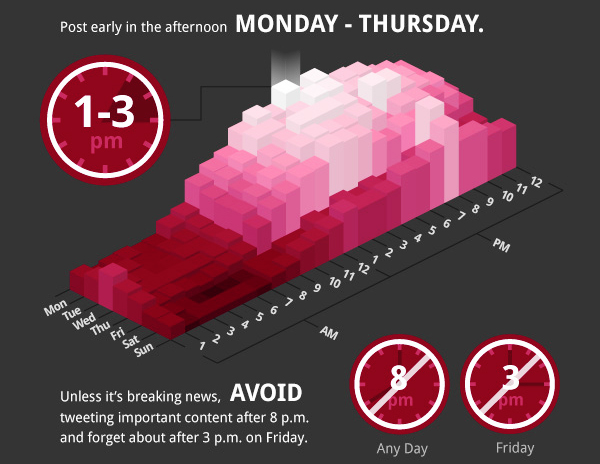
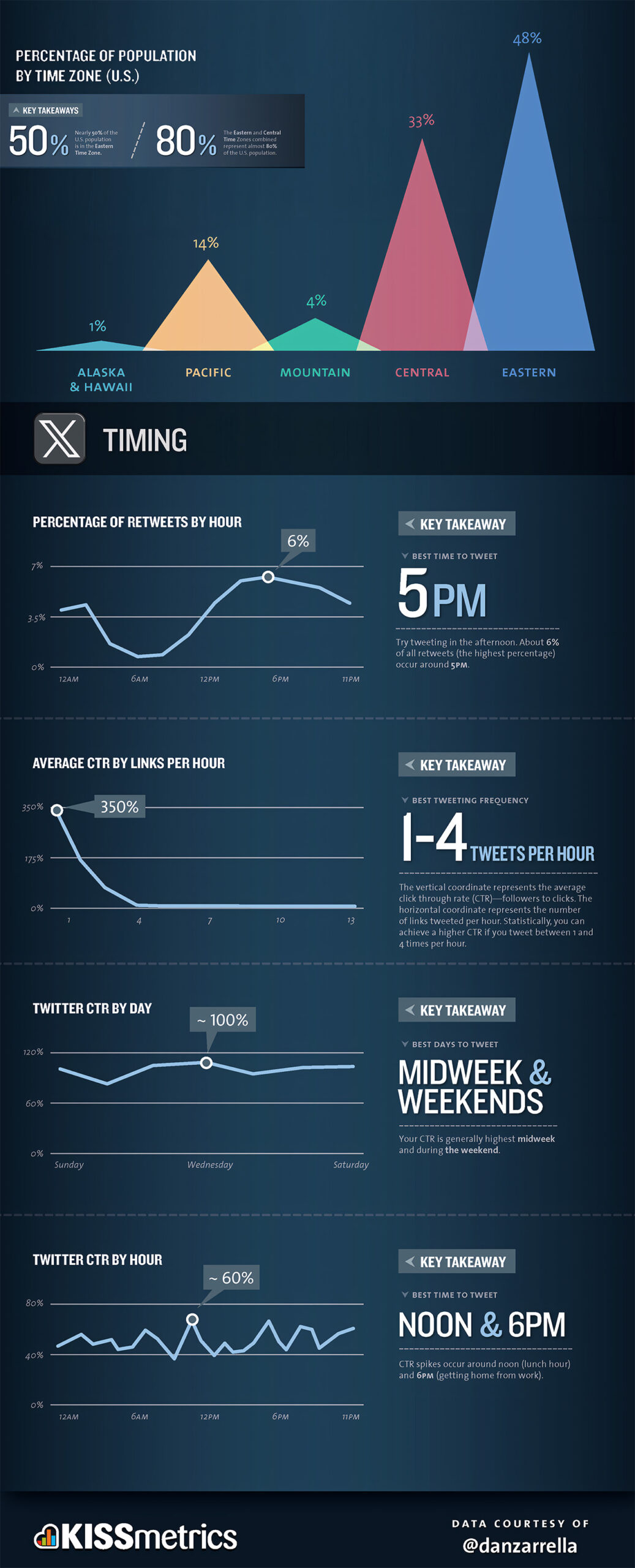
Unproductively Dwelling is No Good
An overlooked but incredibly powerful factor is dwell time. X measures how long a user pauses on a tweet. If a user scrolls past without stopping, the algorithm assumes the tweet isn’t that interesting and ranks it lower. But if the user stops to read and even clicks to expand a thread, there’s a strong signal that the content is valuable. So threads, hooks, and open-ended questions are great to potentially increase a tweets dwell time, thus potentially increase a tweet’s reach.
A thread is a series of connected tweets from the same user, posted in sequence to expand on a topic beyond the platform’s 280-character limit.
X rewards engagement, and threads are a cheat code for getting more of it. Instead of one tweet that either takes off or flops, a thread creates multiple chances for traction. A thread is a series of connected tweets from the same user. Tweets are posted in sequence to expand on a topic beyond the X’s 280-character limit. Instead of cramming everything into one tweet, people can reply to their own post repeatedly, creating a continuous chain of tweets that tell a story and even provide updates.
Every tweet in the thread has the potential to pull in more likes, replies, and retweets, signaling to X that people are paying attention. The more engagement, the more visibility. This is why large accounts use threads so often. it’s not just about storytelling, it’s about influencing the system for maximum reach.
Creating a thread on X is exasperatingly easy. What takes effort is knowing why you're creating one because if you just go on and on with no apparent purpose, folks are going to breeze right by. So here’s the business on how to construct a worth-your-while thread:
1. Begin with a compelling opening tweet: This is the attention getter. If your initial tweet isn’t capturing attention, the remainder of your thread might as well not be in existence. You can either tease what’s in store, make an unambiguous strong statement, or pose an engagement-worthy question.
2. Respond to your own tweet: After posting the initial tweet, promptly click "Reply" and begin composing your next point. Continue this process to construct your thread, tweeting incrementally, one at a time.
3. Number your tweets (optional, but smart): If your thread goes longer than a few tweets, you should add “(1/5), (2/5), etc.” at the end to help people follow along because trust me, no one enjoys getting lost in a 15-part saga with no direction.
4. Make every tweet a self-contained unit: X is a scrolling flowerbed. Each tweet should be understandable and appealing enough to entice the reader into the next one. If your tweets don’t work outside the thread, they almost certainly don’t work inside it.
5. Conclude with a call to action: The final tweet should neatly summarize everything and push for some engagement. You could ask a question, provoke some debate, or most shamelessly, encourage people to like and retweet you. If you don’t do this, X’s algorithm will happily shove your thread into the abyss.
That's it! Post wisely, don't overdo it, and for the love of any and all things digital, don't make a 37-part thread about your morning coffee unless you've somehow discovered the very essence of life in the foam.
To the Newcomer with Few Followers
So what if you are beginning from nothing? What if you have almost no followers and an audience that is not built in? This is where replies become extremely powerful. Pay close attention because this can be extremely effective.
X doesn’t just rank original tweets we’ve been focusing on. Their algorithm also ranks replies. If you reply to a viral tweet with something astute or profound that triggers engagment, that reply also can ascend to the top of the conversation. And if it does, it can be seen by thousands or even millions of people. This is one of the best methods for gaining visibility for a new or small sized account without depending on the sheer randomness of a single tweet going viral on its own.
The Value of Frequent Engagement:
aEvery account on X possesses a reputation score based on past interactions. New accounts or those with limited engagement are recommended less frequently. However, you can circumvent this by generating good engagement with accounts in your niche. It will signal to X’s algorithm that your posts are worth amplifying, making them appear more frequently in recommendations. By consistently interacting with a niche community, an account increases its chances of receiving recommended tweets in that niche, boosting its presence in the algorithm.
X’s algorithm isn’t just looking for engagement. Like any computational system, it’s looking for patterns. If you regularly interact with active, high-engagement users in your niche, your tweets become more likely to show up in peoples feeds, even if those followers don’t follow you directly. It’s a snowball effect. The more frequently you engage, the more the algorithm boosts your content.
Use Media That Engages: Multimedia content such as high-definition images, native videos, and GIFs, performs best on X. When you add media to your tweets, you also boost your CTR (Click-Through Rate), which is a measure of how clicky your tweets are, how far they travel, and how much time people spend with them. Semantic Richness of the Text: Use phrasing that makes for good NLP. Ensure that there is a high level of semantic similarity with trending topics without hitting the oversaturation point. Make sure that sentences in tweets are structured well; readability is key. Better yet, make engagement effortless with high readability and a well-structured tweet. Collaborative optimization of hashtags and LDA: Content using Latent Dirichlet Allocation leverage it to identify the concealed subjects within trending hashtags, then harmonize these subjects with the tweet content to enhance its visibility in feeds beyond the immediate follower base. Alignment of Keyword Entity Embedding: X's recommendation system uses entity embeddings to match with their user interest vectors across their content. A user can influence the ranking of a tweet in the system's output by carefully placing it among trending or high-volume search terms within the tweet's text and metadata. Engage Early and Inject Influence via Reciprocal Amplification: Engage directly with influencers who are right below the tipping point of viralness, such as mid-tier influencers (5K-50K followership). When working with these accounts, reply to them in a conversational manner and use quote tweets with them as well. These influencers are much more likely to interact back with you, and if they do, the tweet ranking algorithm is much more favorable to your combined tweets. Posting When the Platform Is Most Busy: This is a matter of deploying not just in the moment but also in the most opportune moments, determined via X's API for region-specific activity spikes. Provocative Prompting to Induce Retweeting: Construct tweet scaffolding that makes users share at least a bit of themselves when they do share (e.g., by putting a statement in an envelope that compels argument in exchange for endorsement, or by asking a question that demands an answer). Multi-Tweet Burst Strategy (Stacked Engagement): Use 3-5 interconnected tweets to simulate a visibility bump, artificial clustering, and network diffusion. Instead of a single tweet, finish up with a handful that pushes story extension, all in a very short time window to simulate artificial clustering. Delete and Repost Strategy for Tweets that Don't Work: If a tweet doesn't get any traction within 20-30 minutes, delete it, rephrase it, and repost it with slight variations. This can be done with media, wording, or timing. How to Time Your Tweets for the Best Possible Results: Don’t post several times in rapid succession, or the X algorithm may downgrade your account. The algorithm looks at the balance between the "replies," "likes," and "retweets" a tweet has received and uses those metrics to determine how many people should see that tweet. Engagement Pods (Ethical Coordination): Work with small groups of authentic users to engage with your post in the initiative’s first 5-10 minutes. This is a human-triggered method of making X’s Engagement Rank model work for you. The Engagement Rank model seems to favor tweets that receive activity bursts right after they are shared. Quasi-Viral Cascade Amplification: Identify promising tweets (through the X API or using common-sense trending tabs) and insert highly engaging, highly retweetable replies with extra value editorializing what the person was already saying. Taking Over Trending Content with Quote Tweets: Find out what the trending topics are and compose a quote tweet that puts a narrative twist on them, extends them, or contests them. Use the original tweet's algorithmic power to give your tweet some real sociopolitical heft. High-Engagement Probability Targeted Influencer Tagging: Tag or mention influencers in a way that is most likely to get a response without coming off as spammy. You want your post to have the potential to reach, and ideally be seen by, a lot more eyes, which is what you'd think, and you'd be right, when you consider the followers of the influencers you're tagging. Profile Completeness and Authority: A bio that's fully optimized and has keywords in all the right places helps with the credibility of the account, which translates to a higher "weight" for the tweets themselves. Avoiding Shadowban Triggers: Keep an organic engagement pattern, and do not post an excessive number of external links. High outbound link frequency can be classified as spammy behavior, and behavior that is classified as spam can get you shadowbanned on Instagram. 1) Content Engineering & Algorithmic Optimization
2. Engagement Velocity & Graph Expansion
3. Temporal Dynamics & Reinforcement Strategies
4. Leveraging Algorithmic Bias in Content Discovery
5. Trust & Authenticity Signals
Advanced Intelligence from 3rd Party Platforms
To take social media effectiveness seriously, third-party tools will provide extremely useful insights. The who, the when, and the how of the engagement going on right under your nose. They also let you in on proprietary competitor tracking, assist with the management, scheduling, and even in-depth analysis of your account. Some even help with content creation.
Here are some tools that stand out: Access these tools and you are no longer viewing the game from the inside but really comprehending the whole playbook.
1. X Analytics: The Bare Minimum
Your go-to for analytics without platform departure is X Analytics. It’s built into your account and provides the fundamentals on how many people viewed your posts Also how many engaged in a way that might be called a conversation, and how many new followers you added or subtracted in the period since the last time you looked at the analytics.
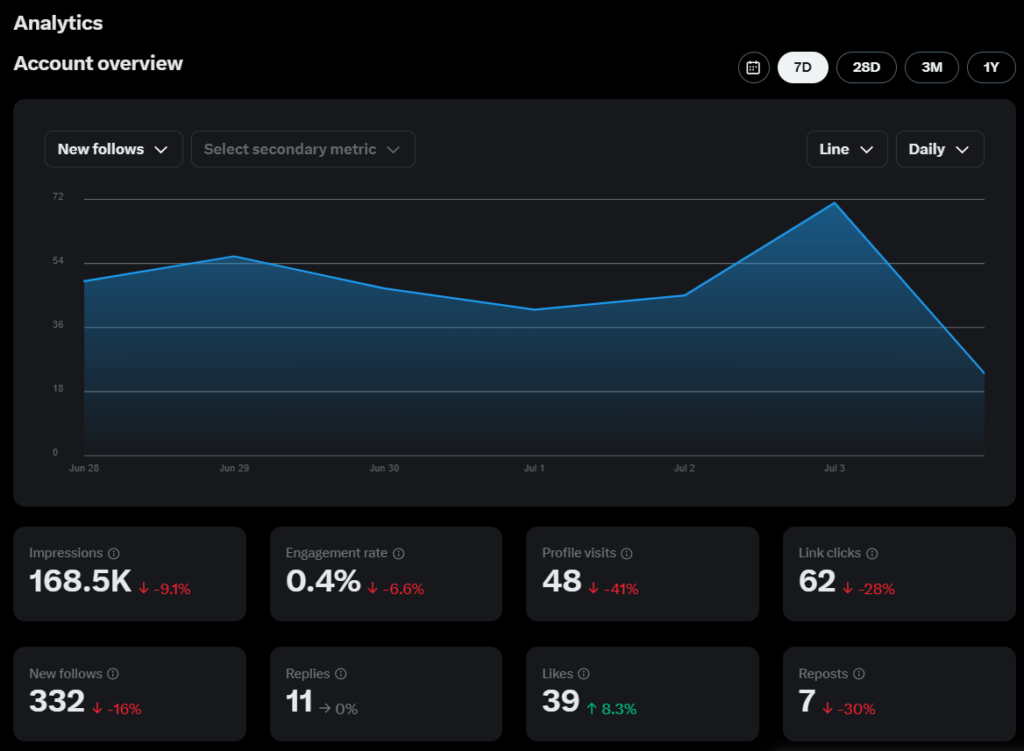
There’s nothing really wrong with it. It’s just that it’s built for the most basic level of analytical needs, and despite how “basic” sounds as a descriptor, there are plenty of firms that provide access to similar tools at a premium price.
2. Social Blade: The Stalker’s Toolkit
Tracking numbers is what you do when you use Social Blade. Not just your numbers but everyone’s, too. You track them across multiple realms. Social Blade shows detailed follower growth trends over time.
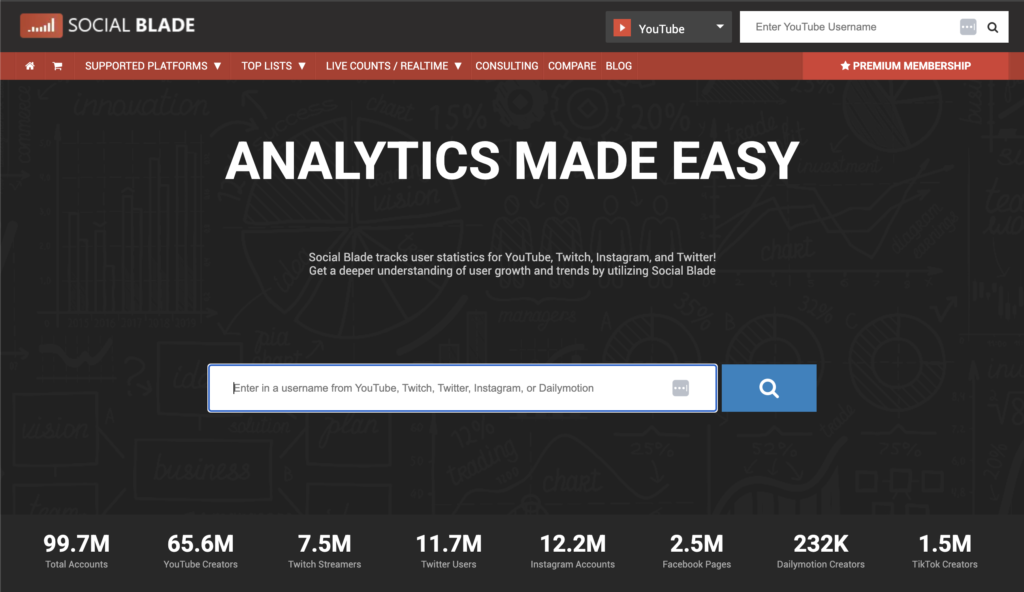
You can see whether your account or someone else’s is rising, tanking, or just sort of sitting there and not doing anything. Of course, you do all of this in the name of X’s intelligence. And not only Instagram but also YouTube and some other places where numbers really matter.
3. Followerwonk: The Engagement Whisperer
If you want to know who is interacting with your tweets and when they’re most likely to do it, Followerwonk is your tool. It helps you discern the best times to post, analyzes your followers, even compares your account with others in your niche.
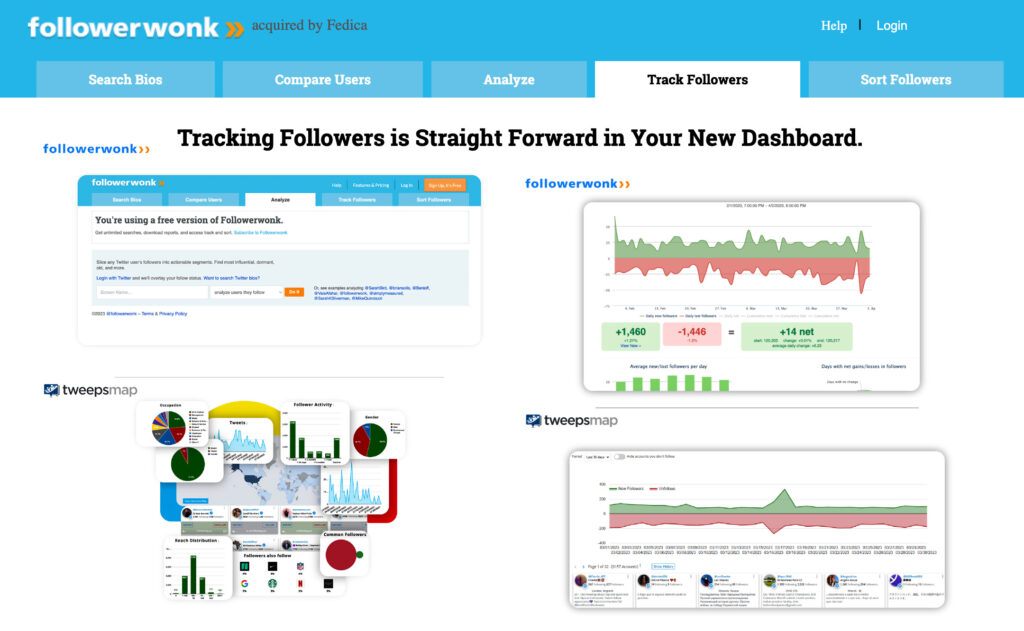
In short, it tells you if you’re talking to the right people at the right time, or just screaming into the void. Its free version isn’t limited to your Followerwonk account; it also allows you to peek into the accounts of your dreams or nightmares. And because its free version is so good, its paid version is often dismissed.
How Bad Actors Game the System Using Black Hat TweetingTactics
X is a game, and like any game, there are players who play it clean and players who play dirty. The clean approach—white hat tactics—works with the algorithm, grows organically, and uses strategic engagement to maximize reach. But some users aren’t interested in playing fair. They find and exploit loopholes, manipulate engagement, and use bots both to cause mischief and to inflate their inflated egos. And while the X algorithm is always evolving, many of these black hat tactics still manage to slip through the cracks.
Engagement pods, counterfeit verification schemes, and bot-driven trend manipulation are just some of the tactics that Twitter’s black hat world employs to give bad actors a leg up. By relying on these methods, these nefarious sorts of people not only inflate their own importance but also undermine the platform’s integrity. This manipulation not only distorts public discourse but also raises significant concerns about user trust and the authenticity of information shared on the platform. As these tactics proliferate, they complicate efforts to address twitter government control issues, as the line between genuine engagement and manufactured noise becomes increasingly blurred. Ultimately, the presence of these malicious strategies threatens the foundational principles of open communication that Twitter once aimed to uphold.
1. Engagement Manipulation
2. Authority Manipulation
3. Trending Topic Hijacking
4. Shadow SEO & Link Manipulation
5. Reply Manipulation
6. AI & Automation Exploits
Threading it all Together
X’s detection systems are constantly improving, just like the company’s algorithm. Black hat X tactics depend on using loopholes within these systems, but as X and its AI become better at understanding overt and covert ways of attempting to game the system.
Wrapping it all together
You’re now fully equipped to be a X powerhouse. You’re no longer just using the site to toss off random tweets that you hope will get some attention. You know how to make the algorithm work for you. Engagement tactics, timing tricks, and networking strategies where once you were ignorant of these things, you now have the blueprint that top accounts use to dominate your timeline.
You’re no longer just a participant; you’re an actual understanding participant in the battlefield and a force on the platform. You know how it works. You also know that the algorithm is not an obstacle but a tool. You have learned and now have the choice to either apply what you know to become a force atop this X platform or to keep hardly tweeting into the deafening void like nearly all of the retreating masses.
More from Digital Marketing
You Won’t Believe What People Are Googling: Auto-Suggest Nightmares
Without a doubt, Google autocomplete is one of the most illuminating windows into the human psyche. It’s not some cold, …
The Facebook Fraud: How ‘Likes’ Are Manipulating Your Feed
Social media platforms like Facebook aren’t just for sharing memes or catching up with friends—they’ve become critical tools for shaping …
The Internet Revolution: From AOL CDs to Web 4.0 Wonders”
The digital landscape of today is nothing short of revolutionary. Emerging over the last century, we live in an …



















